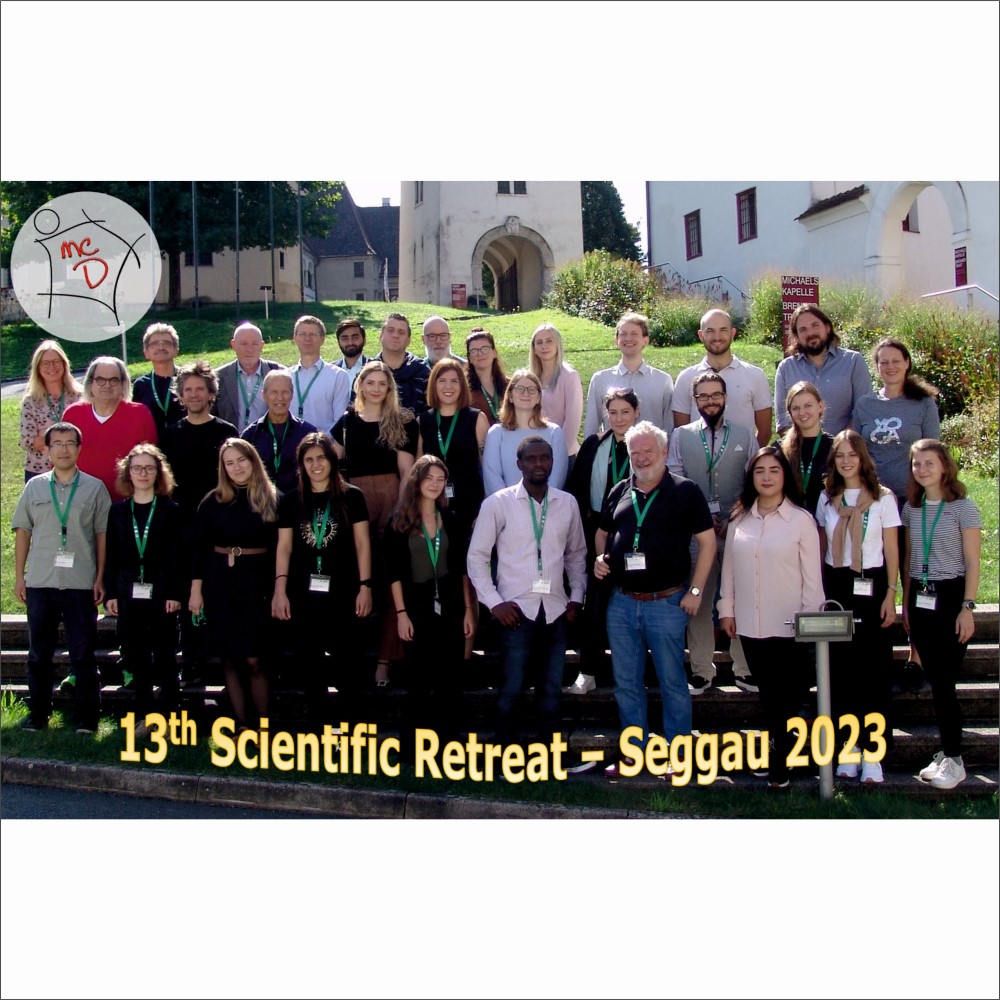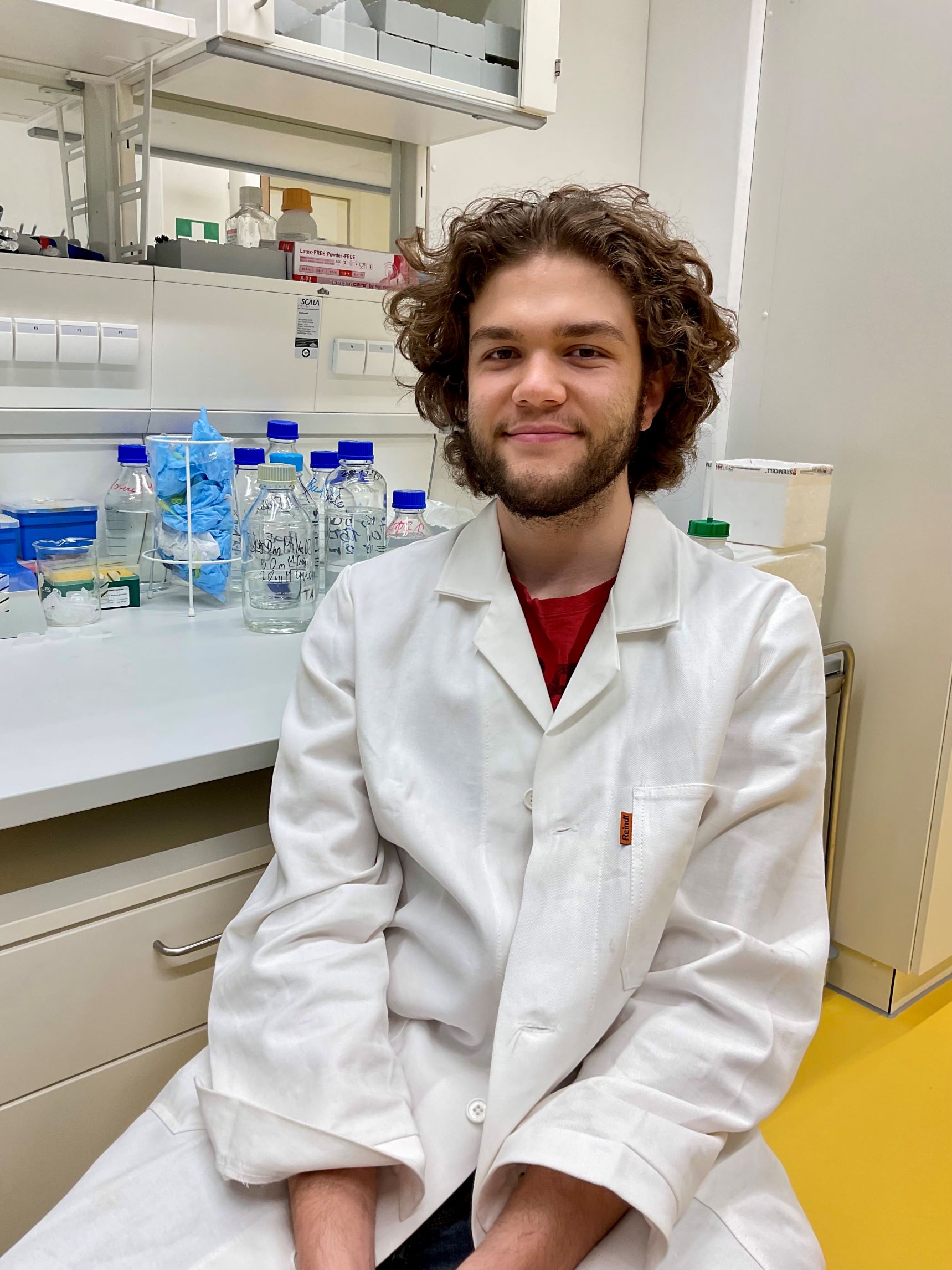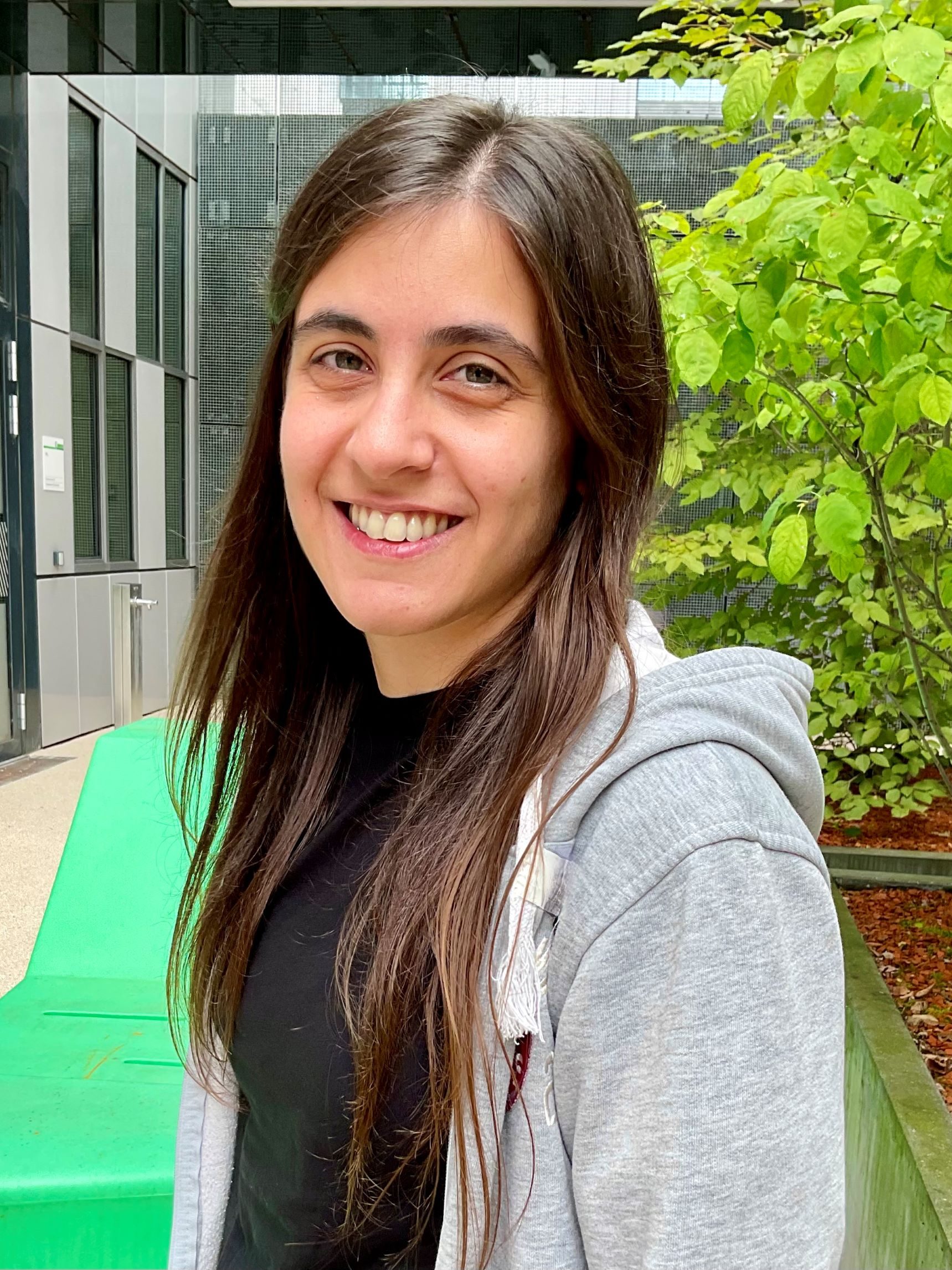
Elucidating the Molecular Interactions of β-catenin in Transcriptional Regulation and Cancer
We seek motivated Master’s students to work on an interdisciplinary research project related to transcription regulation and cancer. Topic: The…
Read MoreThe Madl lab conducts research in the field of structural biology and metabolomics with a special focus on signal transduction and (mis)regulation in human diseases and ageing. More specifically, we investigate the molecular mechanisms how disordered proteins mediate signal transfer via an intricate network of protein interactions and post-translational modifications. We work at the interface of structural biology, biophysics, cell biology, and medicine to study the molecular mechanisms linking key regulatory processes involved in signaling and metabolism. Nuclear magnetic resonance (NMR) spectroscopy and biophysical methods are the primary tools employed in our laboratory to study the structural and dynamical properties of biomolecules and their interactions under native-like solution conditions.
We are located at Otto Loewi Research Center, Medical University of Graz, Austria
Here you can find links to the organizations, initiatives and PhD programs we are part of.

We seek motivated Master’s students to work on an interdisciplinary research project related to transcription regulation and cancer. Topic: The…
Read More
Please apply here: https://www.medunigraz.at/offene-stellen/allgemeines-universitaetspersonal?job=LS-PHYCHE-2024-002579 Deadline 15.2.2024.
Read More
Please contact us if you are interested for a summer internship (tobias.madl@medunigraz.at) 1-2 places for internships are available
Read More
Welcome to the lab Felix Sbüll. Great to have you on board for this project
Read More
We seek motivated Master’s students to work on an interdisciplinary collaborative research project between the Medical University of Graz (Madl’s…
Read More
We're delighted to share glimpses from the 13th retreat of the DK-MCD PhD program, held amidst the stunning landscapes of…
Read MoreOur Lab has the overarching goal of integrative, rigorous, equitable, and collaborative research and we believe that the scientific endeavor is best served by transparent and reproducible work. We all share the goal to participate in open science and share not only outcomes but also the process. Our philosophy is, therefore, based on open, transparent, rigorous scientific approaches in a collaborative setting. The labs operate as a team and will succeed due to our team efforts.

I am a Ph.D. student at Madl lab with a background in bioorganic and nano-chemistry. My research is focused on studies of TCF/LEF transcription factors in the context of canonical Wnt signaling. Utilizing an integrative structural biology and medicinal chemistry approach, we aim to describe the molecular details TCF/LEFs interaction network and implement acquired knowledge for the rational design of peptide-based compounds targeting protein-protein interactions.

My research focus on elucidating the molecular mechanisms involved in (1) signaling pathway (2) nucleo-cytoplasmic shuttling (3) MLO formation/phase separation, and how these processes are regulated by PTMs and mis-regulated in diseases. To this aim, I use mainly NMR spectroscopy in combination with other biophysical methods and collaborate with cell biologists to access the bigger picture. Outside the lab, I enjoy discovering the world as well as practicing several sports.

My name is Vivian and I am currently in my third year of training as a laboratory technician in the biochemistry module. I am involved in maintaining the laboratory work and perform a lot of general lab tasks. In the year and a half that I've spent here, I've been able to deepen my knowledge of chemistry, biochemistry and molecular biology, as well as learn many different techniques. I am excited to see what else I can learn in the years to come.

I work as assistant in the lab, where I am responsible for ordering everything as well as for maintenance and installation of new equipment. Additionally, I prepare, measure, and evaluate NMR metabolomics samples together with the team.

I am studying molecular biology at the University of Graz and in October 2022 I started to work as a part-time laboratory technician in our metabolomics sector. In the summer of 2023, I started to work on my bachelor thesis together with Tobias. Along with several b-catenin-constructs, labeling and measuring methods - mainly NMR and turbidity/fluorescence assays - I want to shed light on the transcriptional part of the Wnt-signalling pathway.

I have a background in bioinformatics and biotechnology. I am interested in interactions between disordered regions of RNA binding proteins and Transcription Factors. I mainly use NMR techniques and computational methods to answer questions arising in my research. When not in lab, I like to cook and experiment in the kitchen, travel and photoraph new places, and watch a lot of movies.

Christopher joined us 1st of September 2023 - Welcome to the Madl Lab!

It is estimated that approximately 20 thousand genes encode human proteins, but the functional proteome is significantly expanded, partly due to post-translational modifications. While pursuing my PhD studies in the Madl lab, I'm focused on deciphering how these modifications, specifically arginine methylation and citrullination, modulate the function, structural properties, and subcellular localization of RNA-binding proteins. Outside the lab, I enjoy traveling, hiking, learning languages, and playing board games.

My research focuses on understanding the intriguing behaviour of IDPs. Together with my team, I have developed a range of innovative experimental and computational techniques to study IDPs, including high-resolution NMR spectroscopy and bioinformatics approaches. I am a passionate mentor and consider the successful career support for my outstanding colleagues amongst my most significant achievements.

My research focuses on the characterization of FOXM1 protein-protein interactions, particularly with β-catenin, their competition and inhibition. I aim to develop peptide-based compounds targeting FOXM1. These compounds could be subsequently used as a platform for the development of IDP proteolysis targeting chimeras allowing selective proteolysis of FOXM1. Besides that, I am involved in the development of peptides targeting p53 transcription factor.

I am a Ph.D. student with a background in cell biology and microbiology. In the Madl lab, I am working on the elucidation of structural and functional insights into caspase signaling. Caspases are the key regulatory proteins in cell death pathway and inflammatory responses. In my project, I mainly use cryo-EM (helical reconstruction) and NMR spectroscopy in combination with other biophysical methods.

I joined the Madl lab as a lab rotation student. I am primarily focusing on studying the TCF/LEF transcriptional factors in the context of protein-protein interactions. Mainly my duties include the expression and purification of proteins and their analysis by NMR spectroscopy as well as other biomolecular techniques. Outside the lab, I like to travel, draw, and read fantasy books.

I have a background in chemistry and biotechnology and joined the group to do my master thesis. I will investigate the formation of biomolecular condensates in plants derived from HIPP-ARF protein interactions. For that, I will use NMR-spectrometry and other biomolecular techniques. Outside of the lab I like to do sports or enjoy a good round of chess.

My background lies in biomedicine and structural biology. Primarily, I'm interested in intrinsically disordered proteins, which are essential in signaling transduction and transcriptional regulation, with special emphasis on proteins involved in aging. Understanding interactions and structural features of those proteins is key to develop potent drugs. If I'm not working in the lab, I enjoy time outside either bicycling, running or hiking, playing sports especially football or cooking new things.

With the aim of understanding the biological process in a quantitative way, I am specialized in the structural biology with solution NMR. I focus on the binding studies of intrinsically disordered regions (IDRs) in the RNA-or DNA-binding proteins. These IDRs could bind to multiple targets, solution NMR is therefore the key to study such interactions. Additionally, I perform computational simulation with molecular dynamics (MD) and protein design with Rosetta to gain more comprehensive insight in the binding details of IDRs. It is a real pleasure to handle and understand protein behaviors.

I am a Bachelor student in Molecular Biology and Genetics at Istinye University. As part of the Erasmus+ Tranieeship Program, I do a 3-month summer internship with Madl Group. I learned fascinating things about metabolomics and I had the chance to learn more about the details of the NMR machine. I would like to thank Madl Group for helping me on this journey, I learned a lot of new things from them!

I am a master's student at the Department of Molecular Biotechnology at the University of Applied Sciences. Over the course of my master's thesis, I would learn to express and purify recombinant proteins in bacterial cells and study them using NMR techniques. Regarding life sciences, I do have a lot of interests ranging from oncology and immunology to structure analysis. During my free time, I like to read, draw and play diabolo outside.

My PhD project focuses on studying the protein sequence code of RG/RGG regions that determines condensate formation, nuclear import, and protein-protein interactions. I conduct further research to comprehend DNA damage responses, particularly regulation of the MRE11-p53 interaction, and investigate the molecular mechanisms of neurodegenerative disease, focusing on the poly-PR/GR and p53 interactions. Outside of my working time, I enjoy swimming, running, reading and travelling.

I am a research technician in the Madl lab, where I also did my master's thesis on the structural and functional properties of protein citrullination. I am currently working on metabolomics studies and various disordered proteins using NMR spectroscopy, as well as helping to maintain the lab. Outside the lab, I can often be found outdoors, either climbing, hiking or slacklining.
Alumni of the Madl lab at Medical University of Graz
PhD Theses
Current position: Principle Scientist, Sosei Heptares, Cambridge, United Kingdom
Current position: Associate Professor, Fujian Medical University, Fuzhou, China
PhD thesis and master thesis
Current position: Principal Scientist, Novartis, Munich, Germany
Current position: Associate Professor, Fujian Medical University, Fuzhou, China
PhD thesis and master thesis
Current position: Principal Scientist, Novartis, Munich, Germany
Master Theses
Master thesis and research technician
Current position: Principal Scientist, Novartis, Kundl, Austria
Current position: lab rotation fellow, University of Graz, Austria
Current position: research technician at Medical University of Graz, Austria
Guest Researchers
Current position: Student, Istinye University, Molecular Biology and Genetics
Department, Istanbul, Turkey
Alumni of the Madl lab at Helmholtz Zentrum Munich and Technical University of Munich from 2012 to 2016
Tobias Madl was BioSysNet and Emmy Noether group leader at Helmholtz Zentrum Munich and Technical University of Munich from 2012 to 2016
We focus primarily on the highly conserved Wnt signaling pathway and intersected pathways, forkhead/p53 transcription factors, and the biogenesis of RNA-binding proteins. Distortions in these proteins and pathways lead to a plethora of diseases, including cancers, neurological and metabolic disorders, and are linked to ageing. Our group aims to reveal the molecular mechanisms underlying interactions of disordered proteins to provide insight into the intricate link between their function, regulation, and human diseases. We explore our mechanistic/structural discoveries in a drug discovery approach to provide novel routes for disease therapy. We use NMR-based metabolic phenotyping to obtain systemic insight into the molecular outcome of distortions in signaling pathways in cell-based assays, in vivo model systems, and patients. This allows to bridge the gap between atom and patient and vice versa and to obtain new insights into disease mechanisms and diagnosis. More specifically, we are focusing on metabolic changes in cellular senescence, ageing, and the link between metabolism, signaling, liquid-liquid phase separation and human diseases on the level of post-translational modifications (i.e. arginine methylation). To be able to study large and dynamic biomolecular complexes involved in signal transduction, we employ and develop integrated structure determination protocols in which we combine NMR spectroscopy, SAXS/SANS, complementary techniques (i.e. XRD, MS, cryo-EM, FRET, ITC, fluorescence polarization, SPR), and modeling strategies. Next to molecular dynamics programs widely used in the NMR community, our computational focus is on the integration of novel techniques in the Rosetta and AlphaFold de novo structure prediction framework. Several approaches were developed and applied by us to challenging biological systems in the last few years.





Our lab has more than 10 years of experience in NMR-based metabolomics. We have expertise in all aspects related to metabolomics from study design, sample collection, sample preparation, NMR analyses, data analyses and data interpretation. Please feel free to contact us if you are interested in a (scientific) collaboration.
Using NMR spectroscopy we carry out untargeted metabolomics studies in biological samples ranging from, but are not limited to, complex plant extracts, cells, media, model animals, to human tissues and biofluids.
We carry out targeted NMR-based metabolomics and absolute quantification of metabolites in complex matrices.
We use NMR spectroscopy and complementary techniques to identify and validate yet unknow/novel metabolites in complex matrices.
We use NMR spectroscopy to quantify levels and dynamics of post-translational modifications in biological samples (e.g. cells, tissues). Methods are established for arginine methylation (MMA, ADMA, SDMA).
We use the Bruker Biospin B.I. methods in combination with our in vitro diagnostics – research use (IVDr) system for quantification of serum/plasma and urine metabolites, and serum/plasma lipoproteins.
We use NMR spectroscopy in combination with 13C and/or 15N labeling of metabolites to obtain more insight into metabolic fluxes and dynamics.
We are running a cutting-edge platform of infrastructures for integrative structural biology, drug discovery, and metabolomics at Medical University of Graz. We live a “lab without walls” philosophy and operate our infrastructure with a collaborative mindset, for example by offering access via the Integrative Structural Biology and Biophysics (ISBI) network in Graz. Please feel free to contact us if you are interested in a (scientific) collaboration.

Bruker 600 MHz NMR spectrometer equipped with an Avance Neo console for metabolomics and structural biology studies of biomolecules and complexes. The system comprises a 14.1 Tesla magnet with 1H/13C/15N TXI, 1H/BB BBI probes, and a temperature-controlled SampleJet sample changer capable of handling up to 500 samples. We run our NMR as BioTechMed-Graz shared infrastructure.

The Microcal VP-ITC by Malvern Panalytical is an advanced isothermal titration calorimeter which is used for the measurement of thermodynamic parameters associated with biomolecular interactions. The system comprises of an adiabatic outer shield containing sample and reference cells, a precise liquid injection system, and a spinning syringe. This permits controlled temperature operation, up to 50°C.

BRAVE B2, a nanoparticle analyzer, measures particle size distribution and concentration with time-resolved precision. Manufactured by BRAVE Analytics in Graz, it employs an optofluidic force induction technique for counting. The instrument detects particles spanning in size from 50 nm to 2000 nm. It integrates a microfluidic liquid handling setup, a autosampler, and a 532 nm laser operated through H.A.N.S. software.

Four Thermo Scientific™ MaxQ™ 8000 Incubated Stackable Shakers, used to grow up to 40L of liquid culture of E.coli at the same time. The shakers have a temperature range of 5° to 60℃ and are equipped with a HEPA filter, which ensures the air inside the chamber remains clean and reduces cross-contamination, and a slide-out platform.

Two Cytiva ӒKTA pure chromatography systems (one at room temperature and one at 4℃), each equipped with multiple wavelength monitoring, pressure control, four input pumps, one injection port and a fraction collector. We use different columns to purify proteins and peptides of various sizes using size exclusion and other affinity chromatography techniques.

Gilson’s GX-241 ASPEC system automates sample preparation and liquid handling, and is commonly used in solid-phase extraction (SPE) with a positive pressure for metabolomic sample preparation for PTMs quantification. It features mobile rack technology, special sealing caps, and a syringe pump. The software ensures precise liquid handling, allowing to handle up to 24 sample elutions in a single run.

A high-capacity Savant SpeedVac SPD210 concentrator from Thermo Fischer equipped with a refrigerated vapour trap, a vacuum pump, and a centrifuge rotor with a capacity to accommodate up to 200 x 1.5mL tubes. It is routinely used during metabolomic sample preparation as well as to lyophilize biomolecular samples.

A Mosquito crystallization robot (SPT Labtech) can precisely dispense small liquid volumes (25 nL- 1.2 µL) to set-up plates for setting up and screening suitable conditions for protein crystallization in a high-throughput manner. The system includes robotic plate handlers, stackers, bulk liquid handlers, a humidity chamber, and a spool cover.

The cell culture is equipped with Thermo Scientific Herasafe 2030i Biological Safety Cabinet (BSC) with touchscreen and connectivity for remote access and secure data storage, Binder CO2 incubators model CB 170 with hot air sterilization and heat sterilizable CO2 sensor and Nikon TMS inverted microscope among other equipment. We have many cell lines available in the lab including Hela, Hek-293 and RPE cells.
